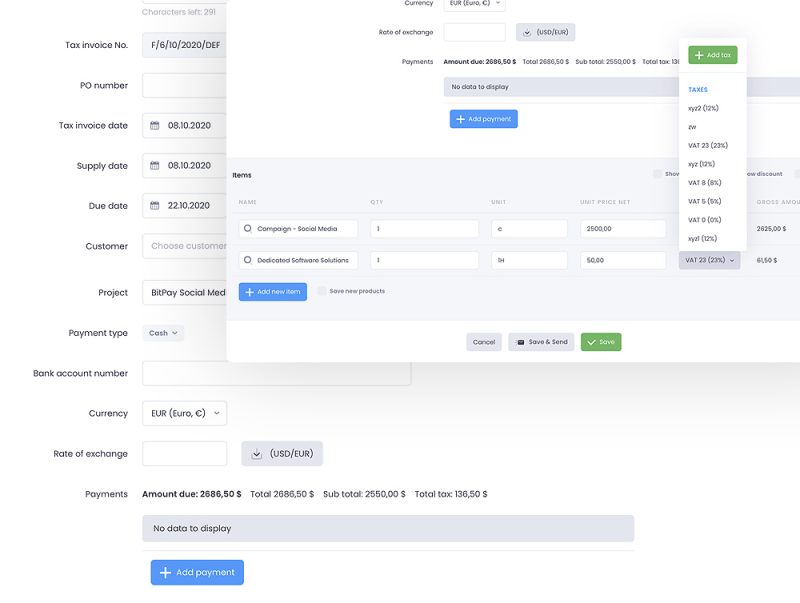A changing economic environment, rising prices for raw materials and energy, and increasing expectations of various types of stakeholders (customers, employees, partners, etc.) – are just some of the challenges facing smaller and larger companies in 2023. In such a situation, companies operating in various industries are striving to reduce their overhead costs, i.e. those related to daily operations – the task of optimizing expenses becomes much more important for them than it was before.
Reduce overhead costs – table of contents:
Below we explain in detail which categories of expenses are covered by the aforementioned term, as well as point out the most effective ways to reduce overhead costs, which are undoubtedly worth reaching for in the current economic reality.
What are business overheads?
Overheads (also called indirect or operating expenses) refer to ongoing expenses that a company incurs as part of its day-to-day operations, but which are not directly related to producing a specific product or providing a specific service. Thus, these are the expenses that the company must cover regardless of the level of production or sales. They primarily include:
- rent or lease payments (rent or lease of office space, warehouses or other facilities),
- utilities (expenses for electricity, water, gas and other utilities required for business operations),
- salaries and benefits for administrative staff (paid to employees with HR or finance functions),
- Insurance (both mandatory and voluntary),
- office supplies and equipment (expenses for office equipment, computers, printers, scanners and other equipment needed for daily operations),
- taxes and licenses (e.g., property tax)
- depreciation (the gradual decrease in the value of assets over time, which is taken into account in financial statements),
- maintenance and repair (receivables related to the repair of equipment, machinery and appliances),
- legal and accounting fees.
4 ways to reduce overhead costs
Effective management of overhead costs is crucial to maintaining a company’s profitability, especially in times of less stable economic conditions. For this reason, companies are looking for ways to reduce these expenses – but without negatively impacting operations or the quality of products and services. The best of these, which may yield the expected results in 2023, are presented below.
- Negotiate arrangements with suppliers
- Outsource selected processes
- Conduct a financial audit
- Use a single comprehensive tool
The first way to reduce overhead costs is to negotiate arrangements with your existing suppliers (e.g., accounting services, materials, legal services, etc.), which may take time and effort but has the potential to yield significant savings for your business. When deciding to do this, define the specific goals you would like to achieve during negotiations (e.g., lower prices, longer payment terms or discounts for bulk purchases) and what you can offer in return. Also look for cheaper suppliers by comparing offers available on the market (in terms of price, quality, payment and delivery terms, as well as the history of cooperation). The deals you find can be an argument for existing suppliers to lower their prices to keep you.
Outsourcing involves outsourcing certain tasks or processes to outside companies that are specialized in those areas (such as accounting, customer service, marketing, recruiting, IT or manufacturing). It can help reduce overhead costs by eliminating the need to hire and train internal staff, as well as purchase and maintain equipment or infrastructure. If you want to use this method, you should start by identifying processes or tasks in your company that can be outsourced – that is, those involving significant expenses or requiring specialized knowledge.
Another way to cut back is to have a financial audit performed by someone who specializes in this area. While this process is usually used to express an opinion on the accuracy of the financial statements, it can also be a tool to understand the sources of income and expenses. Thus, it will also allow you to assess whether all overhead costs are necessary and reasonable. As a next step, it will, in turn, be possible to look for areas for improvement – not only in reducing them but also in increasing the company’s profitability through other means.
Instead of paying, usually in the form of a subscription for multiple tools, look for an alternative that offers all (or most) of the features your business needs. One such solution is Firmbee, a powerful system for managing projects and teams. In addition to breaking down project tasks and assigning specific users to them, you can also carry out the recruitment process (ATS system), build your contact databases (CRM), manage your calendar and to-do list, control inventory, prepare quotes for clients, issue invoices and keep track of receipts and expenses. Discover the possibilities of Firmbee with the free version!

Overhead costs – summary
Reducing overhead costs, contrary to appearances, does not necessarily mean cuts that negatively affect the operation of a company or organization – a better term in this context is undoubtedly “necessary optimization of expenses.” After all, the goal of any business is to find ways to save money while maintaining or improving the quality of products or services. The first step to do this is undoubtedly a thorough analysis of revenues and expenses, which will identify areas where savings should or can be sought. This can be followed by determining which of the ways (including those mentioned above) the company decides on – depending on its needs and capabilities.
If you like our content, join our busy bees community on Facebook, Twitter, LinkedIn, Instagram, YouTube, Pinterest, TikTok.
Author: Piotr Pawłowski
Product Owner with over 15 years of experience in broadly understood Internet marketing. Without the slightest problem he can manage a project and everything is in one place. Passionate about growth hacking, his areas of interest include project management, business development and content marketing. He is also an avid HR enthusiast.


















